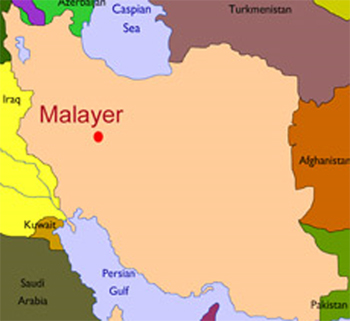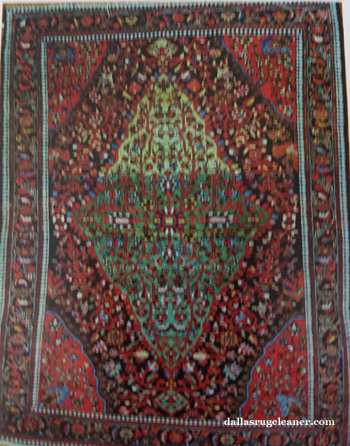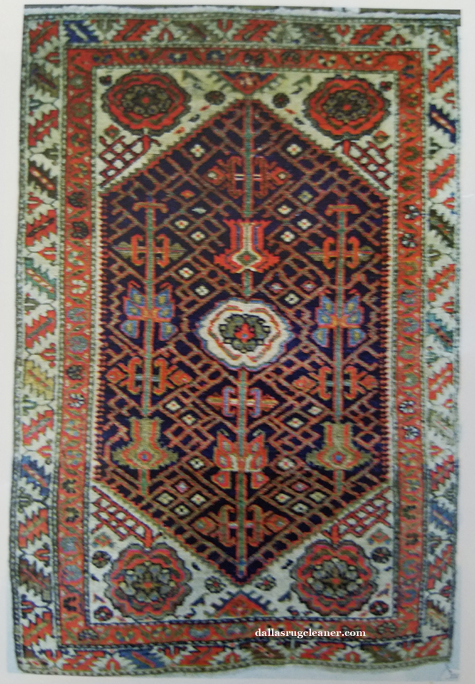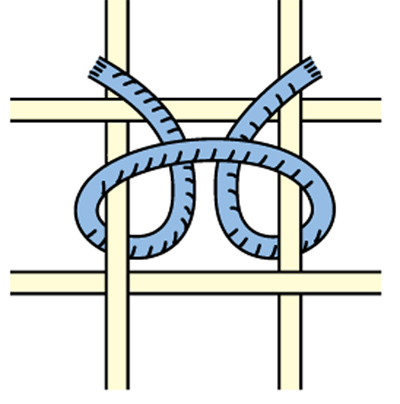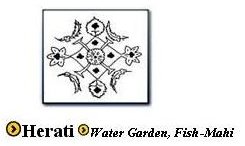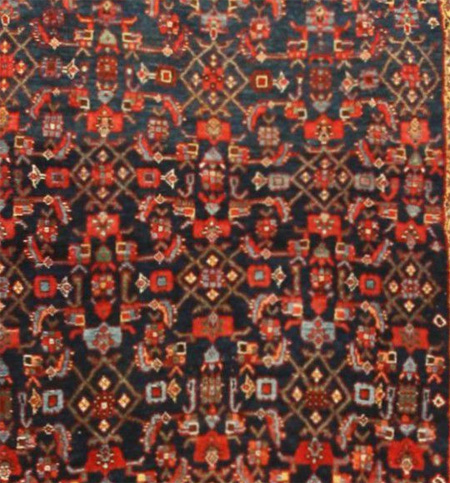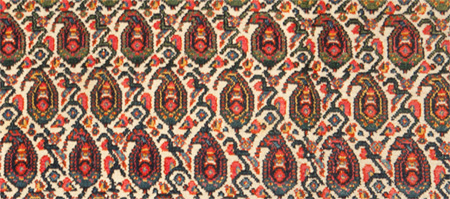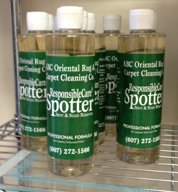MALAYER ORIENTAL RUGS
HISTORY
The weaving of Malayer oriental rugs has a long history. Rug production in the 19th and 20th centuries in Malayer and the surrounding smaller villages was of small rugs and runners all woven by individual weavers.
Larger and over-sized rugs were usually only woven on commission by families.
LOCATION
Malayer oriental rugs are woven in the Malayer area in NW Iran between the 2 major weaving areas of Sarouk and Hamadan. The close proximity to these areas gave the Malayer weavers the opportunity to choose characteristics of both for use in designing their own rugs. Two types of Malayer rugs were the result. One of these more closely resembled the Sarouk and the other the Hamadan.
The Malayer weavers were able to use classic Persian designs from both the Sarouks and the Hamadans in their art but the rugs they created were distinctly their own.
2 DISTINCT TYPES OF MALAYER ORIENTAL RUGS
The rugs woven by the Malayer weavers in the SE area of the Malayer region more closely resemble Sarouk rugs while those from the NW area are more similar to Hamadan rugs.
MALAYER ORIENTAL RUGS SIMILAR TO SAROUK RUGS
The rugs in the SE (similar to Sarouk rugs) can be distinguished from the Sarouks by their intricate scrolling vine borders and their somewhat rectangular all-over medallion fields.
Like the Sarouks, they are double-wefted with 2 cotton wefts (side-to-side cords) usually dyed blue. As with the Sarouks, they have depressed cotton warps (top to bottom cords). Depressed warps occur when the wefts are pulled tightly from either side rather than put in with minimal tension. This will displace the warps into 2 levels.
Another difference is the knot used. The Sarouks use the Persian asymmetric and the Malayers use the Turkish symmetric knot.
JOZAN or MALAYER SAROUK RUGS
The village of Jozan in the Iranian Malayer area produces Jozan rugs. They are rugs of the Sarouk type and may be labelled as Jozan Sarouk or Malayer Sarouk by rug dealers. Jozan Sarouks are the finer rugs with higher knot counts and the less fine knotted rugs are labelled Malayer Sarouks.
MALAYER ORIENTAL RUGS SIMILAR TO HAMADAN RUGS
The rugs in the NW area of Malayer similar to Hamadan rugs typically use the same single-wefted cotton construction but often are a much finer weave.
They also use the Turkish (Ghiordes) symmetric knot as do the Hamadan rugs.
FOUNDATION
Both areas of Malayer construct their foundations with cotton warps and wefts. As mentioned above, the SE (Sarouk-like) has a depressed warp and a double cotton weft. Like the Sarouks, the wefts are usually dyed blue.
The NW (Hamadan) has a non-depressed warp and single cotton weft like the Hamadans.
KNOT
Since many of the weavers in the Malayer region were of ethnic Turkish stock, the Ghiordes or Turkish symmetric knot is used for both types of Malayer oriental rugs.
THE DESIGNS
The designs of the Malayer oriental rugs tend to be fairly geometric and abstract. Typically, they range from diamond or hexagon shaped medallions to all-over patterns such as the classic Herati and various other motifs. Stylized birds, flower heads, and vine and lattice patterns are also used by these weavers.
One favorite motif found in antique Malayers is the Boteh, representing a sprouting seed a sign of rebirth and growth in nature. Often, entire fields in smaller rugs and runners will be covered with botehs.
Rugs woven in the SE (Sarouk-like) tend to have medallions with corners and are more floral in design.
Rugs woven in the NW (Hamadan-like) are more geometric with botehs and medallions on a Herati field.
THE PILE
The pile is wool in all Malayer rugs. The wool pile is often cut fairly short to accentuate the detail and clarity of the design.
THE ENDS
The rugs in the SE area (Sarouk-like) like many Sarouks usually have a cotton kilim (a flat area of varying size woven at the end of the rug before the fringe is finished) at one end. Some Sarouks have knotted fringe at the other end while others have knotted fringe on both ends. The Malayers typically have plain fringe on one or both ends.
The rugs in the NW area (Hamadan-like) have a cotton kilim on one end and plain fringe on the other as do the rugs woven in the Hamadan area.
THE SIDES
All Malayer rugs are finished on the sides with a single cord overcast in wool, as do their neighbors in the Sarouk and Hamadan areas.
THE COLORS
The SE Malayer rugs typically have deep navy blue fields with red, sage green gold, and ivory colors throughout. The red colors can run.
The NW Malayer rugs contain all colors, and the common orange-red color may run.
Both types of Malayer rugs may be painted if worn.
"The Cleanest Clean You've Ever Seen."
by
ABC Oriental Rug & Carpet Cleaning Co.
130 Cecil Malone Drive Ithaca, NY 14850
607-272-1566
ABC
Carpet & Rug
Spotting Guide
Learn how to remove spots with ordinary household solutions
Sign up below to gain access to your complementary Spotting Guide from ABC.
Registering your email address guarantees you will be notified whenever discount savings coupons become available.
Did you know that our ABC Responsible Care Spotter can get those pesky spots out of your carpet and rugs and will work equally as well on your clothes and upholstery?
Stop by our office and pick one up. They are $5.00 + Tax but if you have carpets or upholstery cleaned in your home or business, just request a free one from your Technician.
And don't forget to fill out the form above to download your free ABC Spotting Guide!
Oriental and Area Rug Washing at ABC Oriental Rug
Rugs on the wash floor are gently scrubbed before thorough rinsing.
Gentle scrubbing continues. Note the wringer in the background-the next step in the washing process after rinsing.
After thorough rinsing, the rug is sent slowly and carefully through the wringer to take out as much of the water as possible before being hung on racks in the drying room.
Rugs are hung on a rack in the temperature controlled drying room until completely dry.
